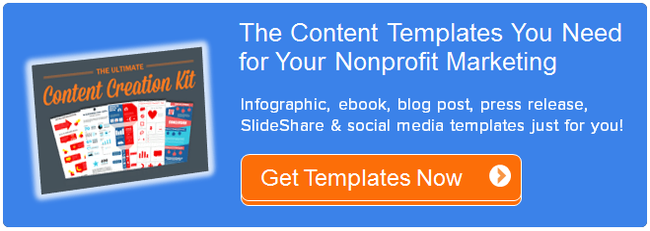 If you’ve been following Inbound Hub for a while, you probably know that a landing page is one of the most versatile and useful tools for online communications. It’s even more useful in social good organizations, where having a lack of resources means that each piece of your communications has to work harder.
If you’ve been following Inbound Hub for a while, you probably know that a landing page is one of the most versatile and useful tools for online communications. It’s even more useful in social good organizations, where having a lack of resources means that each piece of your communications has to work harder.

In my work at Lean Impact, we help social good organizations use Lean principles. Though most social good organizations are “lean” by the traditional definition, Lean here is something different: It means organizations developing products, services, and campaigns by starting small, soliciting user feedback along the way, ensuring they are continually developing something that users want, and pivoting if necessary. The overall goal is to reduce waste: wasted time, wasted effort, and wasted money.
In this context, landing pages are an incredible tool social good organizations can use not only in online communications, but also in product and service development.
Here are five essential ways to use landing pages in your social good organization.
1) To Run Your Campaigns
Landing pages are a quick way to create standalone online content for specific campaigns (i.e. it looks like your website, but it’s not built into the main site navigation). Using landing pages, you can quickly create a page on a topic, add images and messaging, implement a form or call-to-action, and start spreading the word.
Upwell, a lean social good organization, runs up to 160 “minimum viable campaigns” each year using quick creation tactics like this.
2) To Create Targeted Donation Pages
Any social good organization worth its salt has a “donate” button, but in the age of discerning donors looking for messages that resonate, why offer one generic donate message to everyone? Landing pages let you craft targeted donation pages with segmented messages.
Did a portion of your list sign up during a specific campaign? Use a quick landing page with messaging and visuals that reinforce the campaign.
Did a segment of your constituents sign up after a piece of news or legislation? Use a landing page to update them on the progress since then, and how your organization has aided it.
Landing pages let you create custom messages and abandon the “one-size-fits-all” donation page.
3) To Test Your Messaging
We all know that time is one of the most scarce resources in social good organizations. For that reason, it’s important to know what’s working and what’s not, so you can focus and refine what’s working.
Landing pages let you quickly test messaging, know which messages resonate with your audience, and lead to more transactions (whether it's a sign-up, donation, social share, etc.).
Once you’ve run a test for 14 or 30 days, you’ll be able to see what converts the best, discard the lower-performing version, and move on with the high-performing one!
4) To Stop Analysis Paralysis
Oftentimes, in social good organizations (and in any organization, really), projects stall because of differing opinions on how to move forward: The director likes message version 1, but the other department likes version 2 and the board prefers version 3. It’s a cycle that -- on the surface -- appears to be about the project, but often, it’s about much more: internal politics, ego, etc.
In the absence of the “right way,” teams go into analysis paralysis: They need more information, more research, and more time.
Use landing pages to move projects forward and avoid analysis paralysis, because there can be more than one "right way," as you can test multiple versions at the same time. Set up all options, let the tests run, and allow the analytics to show you which performed the best.
This way, you can avoid analysis paralysis and you don’t have to wait until the “right way” is determined.
5) To Test Your Channels
One of the biggest questions people ask about online communications is, "How do I know which communication channels are working?" You likely have a number of channels in your arsenal: email, Facebook, Twitter, etc. How do you know which is performing the best, which you should put more time into, and which you should dial down?
You guessed it: Use landing pages to test conversion from different channels.
For example, run a campaign that’s just on Twitter, and bring people to a landing page specifically for visitors from Twitter. Same with Facebook, Google+, LinkedIn, or other social media platforms you're on. Then, set up a conversion (i.e. email sign-up, signing a petition, donation, etc.) and see which performs the best.
How are you using landing pages in your organization? Share your thoughts in the comments!
Leah Neaderthal is the Co-Founder of Lean Impact, the community of social good organizations using Lean Startup methods in their organization. She is also the Co-Founder and Chief Marketing Officer of Start Somewhere, which provides design and development services for social good organizations. Follow Leah at @leahtn.
If you want to learn more about how to adopt Lean Startup methods in your organization, join Lean Impact’s Lean for Social Good Summit in San Francisco on January 23. Get a 25% discount by entering this code when registering: LEANHUBSPOT.








![A Quick Guide to Nonprofit Website Redesigns [+Best Practices]](https://www.hubspot.com/hubfs/nonprofit%20website%20redesign-1.jpg)

